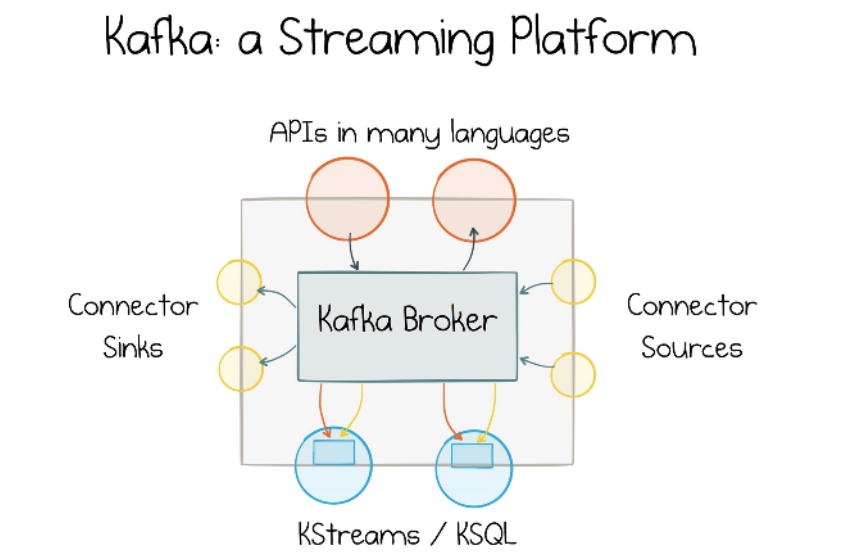
Technical Complexity Analysis of the GenSim2 Framework: Data Augmentation, Proprioceptive Point-Cloud Transformer, and Multimodal Task Planning Calculation
November 1, 2024
@NVIDIA Jetson Technology: A Comprehensive Technical Exploration for Advanced Industrial Robotics
November 17, 2024Introduction
In the realm of JavaScript and TypeScript, closures are one of the most intriguing and essential concepts that every developer should understand. They form the backbone of many programming patterns and paradigms within these languages, enabling a variety of functional programming techniques that improve code organization, maintainability, and reusability. This guide aims to demystify closures, explore their functionality, and provide practical examples to demonstrate their application in real-world scenarios.
What is a Closure?
At its core, a closure is a function that retains access to its lexical scope, even when the function is executed outside that scope. This unique capability allows the function to remember the environment in which it was created, including the variables defined in that context. In simpler terms, closures allow an inner function to access variables from its outer function, effectively creating a private scope that can protect and manage state.
The power of closures lies in their ability to encapsulate functionality and maintain state over time, which is particularly valuable in asynchronous programming, event handling, and the creation of modular, self-contained components. This encapsulation not only helps keep the global namespace clean but also promotes a design pattern that adheres to principles of encapsulation and separation of concerns.
Historical Context
JavaScript was initially designed as a lightweight scripting language to make web pages interactive. Over time, it has evolved into a powerful programming language that supports various paradigms, including procedural, object-oriented, and functional programming. The introduction of closures into JavaScript allowed developers to utilize functional programming techniques, enabling a more robust approach to software development.
As the language matured, so did the understanding and utilization of closures, leading to their widespread use in modern frameworks and libraries like React, Node.js, and Angular. The evolution of TypeScript, a superset of JavaScript, further enhances the use of closures by adding static typing and compile-time checks, allowing developers to write more robust and maintainable code.
Importance of Closures
Closures offer numerous benefits that are crucial for modern web development:
- Data Encapsulation: Closures allow for the creation of private variables that are not accessible from outside their defining function. This prevents unintended interference and modification of state, leading to safer code.
- State Management: Closures help maintain state between function calls without relying on global variables, promoting modular design and reducing side effects.
- Higher-Order Functions: Closures enable the creation of higher-order functions, which are functions that can accept other functions as arguments or return them. This capability is essential for functional programming techniques, such as currying and composition.
- Event Handling: In asynchronous programming, closures are often used in callback functions, allowing them to access variables from their enclosing scope even after the outer function has completed execution.
- Modularity: Closures facilitate the module pattern, which allows developers to organize code into self-contained units. This improves code maintainability and readability by keeping related functionality together.
Structure of the Guide
This comprehensive guide will cover the following topics:
- A deep dive into the mechanics of closures and how they work.
- The various benefits and use cases of closures, supported by practical examples.
- Best practices for using closures effectively and avoiding common pitfalls.
- An exploration of how closures work in TypeScript, including type safety and improved readability.
- Real-world industrial use cases demonstrating the application of closures in modern JavaScript and TypeScript development.
By the end of this guide, readers will have a thorough understanding of closures, enabling them to harness their power to create more efficient, maintainable, and effective JavaScript and TypeScript applications.
Basic Example
function outerFunction()
{
let outerVariable = 'I am from the outer scope';
return function innerFunction() {
console.log(outerVariable);
};
}
const closureInstance = outerFunction();
closureInstance();
// Output: I am from the outer scopeIn this example, innerFunction has access to outerVariable, even after outerFunction has returned. This ability to maintain access to the lexical scope is the essence of closures.
How Closures Work
Lexical Scope
Closures are formed when:
- A function is defined inside another function and accesses variables from the outer function.
- The inner function maintains access to these variables, allowing it to use them even when called outside their original context.
Key Concept: Functions in JavaScript remember the scope in which they were created. This characteristic allows them to access variables defined in that scope, even when executed later.
Memory Management
Closures create a chain of scopes that JavaScript maintains in memory. This can lead to increased memory consumption if not managed carefully, as closures hold onto the variables from the outer function, preventing garbage collection of those variables. Understanding this is crucial for performance optimization, especially in applications with high memory demands.
Benefits and Use Cases of Closures
-Data Encapsulation and Privacy
Closures provide a way to create private variables that cannot be accessed directly from outside the function. This encapsulation helps maintain a clean global scope and protects internal state from unintended modifications.
Example:
function createSecret()
{
let secret = 'This is private';
return function revealSecret() { return secret; };
}
const secretFunction = createSecret();
console.log(secretFunction());
// Output: This is privateBenefit: The secret variable is not accessible from outside the createSecret function, protecting it from external changes.
-Maintaining State Across Function Calls
Closures enable functions to retain state across multiple invocations without resorting to global variables. This is particularly useful for implementing counters, caches, and other stateful behaviors.
Example:
function createCounter()
{
let count = 0;
return function() { count++; return count; }; }
const counter = createCounter();
console.log(counter());
// Output: 1 console.log(counter());
// Output: 2Benefit: The count variable persists between calls to counter, allowing it to track state seamlessly.
-Function Factories
Closures facilitate the creation of function factories, which are functions that generate other functions with specific behaviors or configurations.
Example:
function createMultiplier(multiplier)
{
return function(num) { return num * multiplier; };
}
const double = createMultiplier(2);
const triple = createMultiplier(3);
console.log(double(5));
// Output: 10
console.log(triple(5));
// Output: 15Benefit: This approach allows developers to create specialized functions dynamically, enhancing code reusability and modularity.
-Callback Functions and Event Handlers
Closures are essential in asynchronous programming, allowing functions to maintain context for callbacks and event handlers.
Example:
function setupEventListener(buttonId, message)
{
document.getElementById(buttonId).addEventListener('click', function() { alert(message);
}); }
setupEventListener('myButton', 'Button clicked!');Benefit: The closure retains access to the message variable, allowing it to be used later when the event occurs.
-Memoization for Performance Optimization
Closures enable memoization, a technique where function results are cached to optimize performance, especially for expensive computations.
Example:
function memoize(fn)
{
const cache = {};
return function(...args) {
const key = JSON.stringify(args);
if (key in cache) { return cache[key]; }
else { const result = fn(...args);
cache[key] = result;
return result; }
};
}
const fib = memoize(function(n) {
if (n <= 1) return n;
return fib(n - 1) + fib(n - 2);
});
console.log(fib(10));
// Output: 55 (cached after the first call)Benefit: Memoization reduces redundant calculations, significantly improving performance for recursive or frequently called functions.
-Implementing the Module Pattern
Closures enable the implementation of the module pattern, which organizes code into self-contained units with private and public methods.
Example:
const counterModule = (function()
{
let count = 0;
return {
increment: function() { count++; return count; },
decrement: function() { count--; return count; },
getCount: function() { return count; }
};
})();
console.log(counterModule.increment());
// Output: 1
console.log(counterModule.getCount());
// Output: 1Benefit: This pattern promotes encapsulation and separation of concerns, making code easier to manage and understand.
Best Practices for Using Closures
-Avoiding Unintended Memory Retention
Closures can inadvertently retain references to outer variables, leading to memory leaks. Be mindful of what variables are captured in a closure and release references when they are no longer needed.
Example:
function createLargeObject()
{
let largeArray = new Array(1000000).fill('*');
return function() {
console.log(largeArray.length);
};
}
const largeClosure = createLargeObject();
// If largeClosure is never called, largeArray will still be in memory. -Clear Documentation
Document your functions and closures, particularly when using nested functions. This helps other developers (or yourself in the future) understand the purpose and behavior of each closure.
Example:
/** Creates a multiplier function. * @param {number} multiplier - The multiplier to be applied. *
@returns {function(number): number}
A function that multiplies a given number by the multiplier.
*/
function createMultiplier(multiplier)
{ return function(num) {
return num * multiplier;
};
}Limit the Use of Closures
While closures are powerful, overusing them can lead to code that is difficult to understand and maintain. Use them judiciously, particularly in cases where simpler patterns might suffice.
Using Closures in TypeScript
When working with TypeScript, closures retain their fundamental characteristics, but TypeScript enhances them with static typing and type-checking features, leading to improved reliability and developer experience.
-Type Safety
TypeScript enforces type checks, ensuring that functions operate on expected types, reducing runtime errors.
Example:
function createAdder(x: number): (y: number) => number {
return function(y: number): number {
return x + y;
};
}
const addFive = createAdder(5);
console.log(addFive(10));
// Output: 15-Improved Readability and Intellisense
Type annotations enhance the readability of code and facilitate better autocompletion and documentation features in modern IDEs.
Example:
function createCounter(): () => number {
let count = 0;
return function(): number {
count++; return count;
};
}
const counter = createCounter();
console.log(counter());
// Output: 1
console.log(counter());
// Output: 2-Generics in Closures
TypeScript’s support for generics allows closures to work flexibly with different data types.
Example:
function createStorage<T>(): {
setItem: (key: string, value: T) => void, getItem: (key: string) => T | undefined } {
const storage: Record<string, T> = {};
return { setItem(key: string, value: T): void {
storage[key] = value; },
getItem(key: string): T | undefined { return storage[key]; }
};
}
const stringStorage = createStorage<string>();
stringStorage.setItem('greeting', 'Hello, TypeScript!');
console.log(stringStorage.getItem('greeting'));
// Output: 'Hello, TypeScript!'-Callback Handling with Type Checking
TypeScript enhances callback handling in closures by enforcing type checks, which improves safety and clarity.
Example:
function fetchWithRetries(url: string, retries: number): () => Promise<Response> {
let attempts = 0;
return async function(): Promise<Response> {
while (attempts < retries) {
try { attempts++; return await fetch(url);
} catch (error) { if (attempts >= retries) throw new Error(`Failed after ${retries} retries`);
}
}
throw new Error('Should not reach here');
};
}
const fetchResource = fetchWithRetries('https://api.example.com/data', 3);
fetchResource().then(response => console.log(response)).catch(err => console.error(err));Industrial Use Cases
-Asynchronous Programming
Closures are extensively used in JavaScript frameworks and libraries (like React) for managing state and events in asynchronous operations. This includes handling user inputs, API calls, and managing timers.
Example in React:
import React, { useState } from 'react';
function Counter() {
const [count, setCount] = useState(0);
return (
<div>
<p> Count: {count} </p>
<button onClick={() => setCount(count + 1)}>Increment</button>
</div>
);
}In this example, the setCount function forms a closure that captures the current value of `count.
-Middleware in Node.js
Closures are widely used in Node.js middleware to handle requests and responses, encapsulating logic that can be reused across different routes.
Example:
const express = require('express');
const app = express();
function loggingMiddleware(req, res, next) {
console.log(`Request URL: ${req.url}`);
next();
// Pass control to the next middleware
}
app.use(loggingMiddleware);-Currying Functions
Closures enable currying, which transforms a function with multiple arguments into a sequence of functions that take one argument each.
Example:
function curriedAdd(x) {
return function(y) { return x + y; };
}
const addFive = curriedAdd(5);
console.log(addFive(10));
// Output: 15-Reactive Programming
In libraries like RxJS, closures help create observable streams that encapsulate state and behavior in an elegant manner, facilitating reactive programming paradigms.
Example:
import { Observable } from 'rxjs';
const observable = new Observable(subscriber => {
let count = 0;
const intervalId = setInterval(() => {
if (count > 5) {
clearInterval(intervalId);
subscriber.complete();
} else { subscriber.next(count++);
} }, 1000);
});
observable.subscribe({ next(value) { console.log(value); },
complete() {
console.log('Done!');
}
});In this example, the closure captures the count variable, maintaining its state between intervals.
-Configuration in Web Applications
In modern web applications, closures help manage configuration and settings while providing a clean API for accessing and modifying these settings.
Example:
function createConfig(defaults) {
let config = { ...defaults };
return {
getConfig: () => config,
setConfig: (newConfig) => {
config = { ...config, ...newConfig };
} };
}
const appConfig = createConfig({ theme: 'dark', language: 'en' });
appConfig.setConfig({ language: 'fr' });
console.log(appConfig.getConfig());
// Output: { theme: 'dark', language: 'fr' }Conclusion
Closures are a vital concept in JavaScript and TypeScript, providing powerful tools for data encapsulation, state management, and function creation. Understanding closures is essential for any developer working with JavaScript, as they underpin many advanced programming techniques and design patterns. By leveraging closures effectively, you can write cleaner, more maintainable, and efficient code, ultimately enhancing the quality of your applications.




